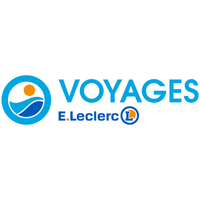Explore web search results related to this domain and discover relevant information.
Offre exceptionnelle - Profitez du paiement en 3X ou 4X SANS FRAIS jusqu'au 17 septembre ! Profitez 3X ou 4X SANS FRAIS jusqu'au 17 sept. ! ... Vente flash - Best of Méditerranée & Co Île Maurice - Jusqu'à -250€ Bon plan de la semaine Dernières minutes Meilleures ventes Toutes nos promotions · Destinations Ôclub Séjours Circuits & Découverte · 0Mes favoris Aide & contact Réservation 70€ offerts - S’inscrire à la newsletter Qui sommes-nous ? Nos guides de voyage...
Explorez à votre rythme avec un guide local pour une expérience exclusive. ... Voyagez en toute liberté avec un itinéraire prédéfini et hébergements réservés.Avec Ôvoyages, la référence des vacances, séjours, circuits et voyages pas chers, explorez le monde au meilleur prix ! Parcourez sans plus attendre nos nombreuses destinations, qui enchanteront les voyageurs à la recherche d’idées de voyages, d’évasion ou encore d'un voyage de noces.Découvrez une variété d’hôtels et de circuits sélectionnés avec soin par notre agence de voyages, soucieuse de l’excellence des prestations proposées. Nos séjours avec vols, hôtel et transferts sont disponibles à petit prix, pour les familles ou les amis souhaitant réserver un voyage pas cher.Découvrez nos offres de circuits accompagnés, autotours et combinés à travers le monde. Laissez-vous séduire par nos offres attractives et profitez d’un large éventail de formules : séjour avec petit-déjeuner, voyage organisé avec étapes, séjour all inclusive ou notre concept exclusif Ôclub, adapté à toutes vos envies.

La cité des Doges ne se limite ... plus intimes et populaires offrent un visage authentique, loin de l’effervescence des tapis rouges. ... Dix ans après un attentat meurtrier, les voyageurs européens sont de retour, Anglais en tête....
La cité des Doges ne se limite pas à la place Saint-Marc ou au Lido, surtout quand la 82e Mostra de Venise capte l’attention du monde entier. Derrière les ors de la lagune, ses quartiers plus intimes et populaires offrent un visage authentique, loin de l’effervescence des tapis rouges. ... Dix ans après un attentat meurtrier, les voyageurs européens sont de retour, Anglais en tête.Séjour République dominicaine | 11 jours | Voyage sensoriel au cœur de la République dominicaine FIGARO VOYAGE SÉLECTION - Cercle des Voyages vous invite à vivre une expérience unique en République dominicaine, où chaque instant éveillera vos sens. Dégustez le rhum local, découvrez le processus de fabrication des cigares traditionnels, et savourez du chocolat fait à partir de cacao frais.Circuit en Turquie | 14 jours | Asie mineure FIGARO VOYAGE SÉLECTION - Arts et Vie, le spécialiste du voyage culturel en petits groupes, vous propose une immersion au cœur de l’histoire et des paysages fascinants de la Turquie, entre merveilles antiques, cités ottomanes et paysages volcaniques spectaculaires.La Journée nationale du cheval, le 14 septembre, ouvre les portes des centres équestres et invite au voyage autrement.


La Fédération du e-commerce et de la vente à distance (Fevad) est l'organisation professionnelle représentative des acteurs du commerce électronique
L’e-tourisme englobe l’ensemble des services numériques pour planifier, réserver et vivre des voyages, de la recherche initiale à la réservation finale, et intègre également des innovations comme la réalité augmentée et les itinéraires personnalisés.Grâce à l’essor des plateformes en ligne, des réseaux sociaux et des blogs de voyage, les voyageurs bénéficient désormais d’un flux important d’informations et d’une expérience toujours plus intégrée et simplifiée. En France, 79% des voyageurs préparent leur voyage en ligne (Baromètre Opodo 2018 réalisé par le Cabinet Raffour).Ce phénomène témoigne de l’importance croissante du numérique dans la planification des voyages. Alors qu’en 2017 le chiffre d’affaires des réservations en ligne de voyages en France s’élevait à 9,33 millions d’euros, il devrait atteindre près de 12 millions d’euros en 2024 d’après les projections du Digital Market Outlook de Statista.Les smartphones et applications mobiles transforment l’expérience du voyageur à chaque étape de son voyage : de la planification à la traduction, en passant par la réservation, la navigation sur place et les recommandations.
Book online for the best deals on cheap flights and hotels with eDreams. Search and compare all airlines including low cost for your next holiday with eDreams.
Book your vacation with eDreams and find the best deals on cheap flights. Search and compare plane tickets, hotels, car rental and more. eDreams USABook your last minute vacation with eDreams!Advance request all your boarding passes in one hit, then we do all the check ins for you as they open and email you each boarding pass.Everything you need to know about any flight, world-wide, whether you're on it or not.

Le groupe E-Voyages est la référence dans le secteur du voyage pour les circuits de groupe sur mesure au Royaume-Uni et en Irlande. DESTINATIONS : > ECOSSE > IRLANDE > ROYAUME-UNI Date de création : 2006
Réservation vols lowcost ou vols réguliers. Trouvez vos billets d'avion Voyages E. Leclerc aux meilleurs prix
Les catégories de clubs et hôtels sont indiquées en normes locales. Les tarifs de nos voyages incluent les taxes aéroports obligatoires et surcharges carburants connues à ce jour. Les tarifs sont sous réserve de disponibilités et s'entendent "à partir de".Recrutement | Formulaire d'information standard | Conditions Particulières de Vente | Mentions légales | Conditions générales d'utilisation du site internet | Charte de protection des données personnelles | Charte éthique du voyageur | Moyens de paiement | Portail E.Leclerc | Allo E.Leclerc | Billetterie et spectacles | Carte cadeau E.LeclercCes tarifs n'incluent ni les taxes locales ou administratives éventuelles (taxes de séjours, taxes d’entrée ou de sortie de certains pays, frais de visa…), ni les suppléments spécifiques susceptibles de s'appliquer à certaines destinations, ni les variations éventuelles de prix ultérieures à l'achat relatifs aux hausses carburant ou variation de taxes.Les tarifs affichés tiennent déjà compte des remises et promotions éventuelles.
Offres triées par notre équipe de piratesInspirez-vous !Offres triées par notre équipe de pirates ... Sur Voyages Pirates vous trouverez des vacances de luxe, all inclusive, dans les Caraïbes, mais aussi des magnifiques hostels à tout petits prix en Amérique du Sud.
Il est facile de trouver des vols pas chers et le prix des logements, de la nourriture et de la bière sont très bas. La Hongrie a quelque chose à offrir à chaque voyageur : vous pourrez par exemple choisir entre vacances à la plage sur le lac Balaton ou séjour en ville à Budapest.La Croatie est la destination à la mode en Europe en ce moment, mais heureusement les prix sont encore bon marché (pour l'instant) ! Réservez une de nos offres de voyage en Croatie rapidement avant que les prix ne commencent à augmenter.Réservez rapidement et facilement vos vacances en choisissant l'une de nos offres de voyage vers des centaines de destinations de choix. Nos offres de voyage comprennent les vols et l'hébergement, afin que vous puissiez organiser vos vacances sans stress.Certaines de nos offres comprennent également des repas, des boissons, des transferts et des expériences spéciales comme des visites guidées. Nous proposons tous types de voyages : séjours en ville, vacances à la mer, escapades de luxe, vacances all inclusive, circuits pour voyageurs de tout âge et voyages packages.

Voyages d’exception accueille Emilie Anne comme attachée commerciale à Paris pour renforcer les ventes auprès des agences de voyages. Voyages d’exception continue son expansion et renforce son équipe commerciale avec l’arrivée d’Emilie Anne, basée à Paris, et qui aura pour mission ...
Assurances Voyages · Brochures en ligne · CruiseMaG · DestiMaG · Dossiers spéciaux · Futuroscopie · La Travel Tech · LuxuryTravelMaG · #PartezEnFrance · Super AGV · TourMaG TV · TravelJobs actus · TravelJobs annonces · TravelManagerMaG · VoyageursMaG ·Voyages Responsables · Hébergement · Distribution · Production · Transport · Brand news · Brand news dernière heure · Carnet · Courrier lecteurs · Editorial · Groupes / CE · People · Publi-rédactionnel · Salons et événements · Webinaires ·Voyages d’exception accueille Emilie Anne comme attachée commerciale à Paris pour renforcer les ventes auprès des agences de voyages. Voyages d’exception continue son expansion et renforce son équipe commerciale avec l’arrivée d’Emilie Anne, basée à Paris, et qui aura pour mission de développe...
Avec Voyages Leclerc planifiez vos vacances : bons plans voyages, promos vacances et séjours dernière minute en France et dans le monde.
Trouvez votre voyage · Recherche par référence produit · à partir de 245 € par personne · à partir de 919 € par personne · à partir de 251 € par hébergement · à partir de 493 € par personne · à partir de 559 € par personne · à partir de 869 € par personne ·


Découvrez les avis et retours d'expérience sur Voyages E.Leclerc : évaluation des offres, qualité des services et satisfaction des clients.
Dans le secteur des agences de voyages en France, Leclerc Voyages s’est affirmée comme une entité majeure. Avec un réseau de 217 points de vente répartis sur tout le territoire, cette enseigne a su rendre le voyage accessible en proposant des offres attractives et variées.Cependant, avant de confier l’organisation de ses vacances à une agence, il est crucial de consulter les avis des clients pour faire un choix éclairé et éviter d’éventuelles déceptions. ... Les retours des clients sur Leclerc Voyages sont diversifiés, reflétant une multitude d’expériences.Sur des plateformes telles que Poulpeo, les avis varient entre éloges et critiques. Certains voyageurs louent la qualité du service et l’organisation impeccable de leur séjour, tandis que d’autres expriment des réserves concernant la gestion des imprévus.Une cliente partage son expérience : « Excellent contact avec les professionnels de l’agence d’Anglet (64). Suivi de dossier sérieux, disponibilité et réactivité irréprochables. » Cette proximité et cette écoute renforcent la confiance des voyageurs et contribuent à leur fidélisation.
Explora Journeys élargit son offre pour l’été 2027 avec des séjours terrestres immersifs en Alaska et dans les Rocheuses canadiennes. Proposées avant ou après ses croisières, ces expériences de trois à cinq nuits mêlent trajets en train de luxe, rencontres avec la faune et découverte...
Assurances Voyages · Brochures en ligne · CruiseMaG · DestiMaG · Dossiers spéciaux · Futuroscopie · La Travel Tech · LuxuryTravelMaG · #PartezEnFrance · Super AGV · TourMaG TV · TravelJobs actus · TravelJobs annonces · TravelManagerMaG · VoyageursMaG ·Voyages Responsables · Hébergement · Distribution · Production · Transport · Brand news · Brand news dernière heure · Carnet · Courrier lecteurs · Editorial · Groupes / CE · People · Publi-rédactionnel · Salons et événements · Webinaires ·

Besoin de prendre l’air ? Offrez-vous un week-end ou des vacances en France, en Europe et partout dans le monde avec E. Leclerc Voyages !
Profitez de la gamme de voyages E. Leclerc pour lâcher prise. A la mer, à la campagne, à la montagne, en Europe, en Afrique, en Asie, en Amérique du Sud ou du Nord… Un large choix de courts ou longs séjours est proposé sur notre site, des vacances tout inclus en famille aux séjours entre amis ou en couple.Découvrez les ventes flash ou exclusives, les promos et la sélection de séjours, locations ou circuits de première ou dernière minute : de nombreuses destinations à petit prix, pour se faire plaisir sans se ruiner ! Votre agence de voyages à Rivetoile vous propose différents types de voyages pas chers, pour répondre à toutes vos envies.Choisissez le séjour qui vous convient, que vous partiez en solo, en amoureux, en famille ou entre amis. Au programme des voyages Leclerc : farniente au bord d’une plage de sable blond bordée d’eau turquoise, tourisme culturel dans les capitales d’Europe et dans le monde, vacances sportives, circuits à thèmes, pauses relaxation…Réservez sans plus attendre votre voyage pas cher chez E. Leclerc Voyages Rivetoile. Votre agence de voyages vous garantit des tarifs exclusifs et de nombreux bons plans.
We cannot provide a description for this page right now
Économisez encore plus sur votre voyage en réservant sur l'appli avec nos codes promo exclusifs pour l'appli.
Faites le plein d'inspiration et découvrez tous les bons plans voyage !Débloquez l'accès à : Des codes promo exclusifsDes baisses de prix et des conseils de voyageDes alertes Prime DayEnregistrement automatique, informations sur le statut des vols en temps réel et toutes les informations nécessaires pour votre voyage, uniquement dans l'appliGO Voyages vous propose les meilleurs tarifs sur les vols, week-end et séjour sur mesure. Comparez les prix et réservez votre voyage pas cher dès maintenant !


Each region is set to allow for deep cultural engagement through its local experiences and extended-stay itinerates, all within the framework of Explora Journeys. ... First Asia Acts as the Center of Attention: the Most Recent Voyages across Asia Explora Journeys’ Ever Undertaken
For Season 2027–2028, EXPLORA II and EXPLORA IV will explore the Central America and Caribbean territories alongside the confounding South America. Across 30 countries including the hidden gems of the Caribbean like Jost Van Dyke and Terre-de-Haut, new to our itineraries like Port Antonio in Jamaica, these remarkable voyages will cover 51 destinations in total.Explora Journeys has unveiled its groundbreaking 2027–2028 collection, introducing exclusive Asian voyages and the debut of the highly anticipated EXPLORA V ship.Guests aboard EXPLORA V will be in Naples for an unforgettable New Year’s Eve celebration, taking center stage for the ship’s inaugural Mediterranean Collection voyage.Explora Journeys has unveiled its groundbreaking 2027–2028 collection, featuring exclusive Asian voyages and the debut of EXPLORA V.
Réservez un voyage Last Minute, durée limitée. ... La combinaison parfaite pour économiser encore plus.
Profitez de nos meilleures offres, de nos prix exclusifs et de notre service client prioritaire grâce à l'app lastminute.com. Et économisez 20 €** sur votre prochaine réservation Vol + Hôtel avec le code APP20. ... Ne tardez pas à réserver votre voyage aux Baléares, ces îles ensoleillées seront inoubliables.Tout simplement parce que c'est la meilleure source d'inspiration pour ceux qui rêvent d’évasion, ceux qui n'ont qu'un week-end, ceux qui cherchent un séjour pas cher, ceux qui ne veulent qu'un billet d'avion, ou ceux qui partent en voyage en famille. Grâce au moteur de recherche, le monde est à portée de clic.Chaque étape du processus vous permet d’adapter votre expérience selon vos envies et de garantir un séjour sur mesure. Les nombreux amateurs de voyages pas chers seront enchantés par la variété des destinations que nous proposons en formule tout-compris.Et pourquoi ne pas réserver un voyage au long court qui vous semblait inaccessible ? Si les plages des Maldives sont les plus réputées, pourquoi ne pas tenter d'aller encore plus loin en nageant avec les requins dans les atolls de Tahiti ? A moins que vous n'osiez quitter les eaux claires des lagons et réserver un séjour en Tanzanie pour prendre votre petit déjeuner en compagnie des girafes, au cœur de la savane.


rESERVA AHORA RENTA DE AUTOS RENTA DE AUTOS vUELOS HOSPEDAJES …
DONDE ENCONTRARAS TODO PARA TU VIAJE, CON LA MEJOR ASESORIA DISPONIBLE · VER MÁS · Iniciar chat ·EMERGENCIAS EN DESTINO 5579138424, CHAT 24/[email protected] · etravel.com.mx · Hoteles, Vuelos y Paquetes a todo el Mundo · Lunes a Viernes 09:00 am a 6:00 pm Sábados Online 9:00 am a 14:00 pmASESORES VACACIONALES 5570952467 · MENÚ · RENTA DE AUTOS ·

Je voyage (I travel), Tu voyages (you travel), Il voyage (he travels), Elle voyage (she travels), On voyage (we travel), Nous voyageons (we travel), Vous voyagez (you travel), Ils voyagent (they travel), Elles voyagent (they travel).
Verbs conjugated the same way as voyager are: manger (to eat), changer (to change), charger (to charge).Voyager can be followed by the prepositions en and à – Voyager en – Voyager à – To travel by when it comes to transportation.https://theperfectfrench.com/wp-content/uploads/2025/03/14.-Voyager-Imperatif.mp3 ... When talking about transportation in French, we can use two different prepositions after the verb: à and en.Join thousands learning French with Dylane! Easy online lessons, free PDFs, and step-by-step guidance from a native speaker.
This is an example of offers featured previously on Voyage Privé. Our offers are for members only and change daily.
Get up to 70% off on luxury travel, plus some exclusive perks...Voyage Privé is the ✈️ leading members-only travel club offering luxury holidays at the best prices. ⭐ Enjoy up to 70% off with exclusive offers on premium getaways.

Start to unlock the true power of e-Navigation and performance solutions. Get on board with NAVTOR today. Discover more ... Our Voyager Worldwide Customer Service team is here to support all your e-Navigation needs, providing our customers with 24/7/365 support wherever you and your vessels ...
Start to unlock the true power of e-Navigation and performance solutions. Get on board with NAVTOR today. Discover more ... Our Voyager Worldwide Customer Service team is here to support all your e-Navigation needs, providing our customers with 24/7/365 support wherever you and your vessels are in the world.Voyager Worldwide is now a NAVTOR company. By joining forces helps to create maritime’s greatest global leader, serving 18,000 vessels worldwide.Through research, industry collaboration, digital understanding and the relentless desire to tackle challenges with innovation, NAVTOR has created a simple, seamless and secure way to enable true smart shipping. Our unique ecosystem, which you can easily tailor to your exact requirements, streamlines processes, automates tasks and enables better decision making – both on the bridge and for business.Rather than addressing areas in isolation, it connects the dots between systems, vessels, fleets and entire organisations, securely sharing data to optimise real-time and future performance, safety and efficiency.






